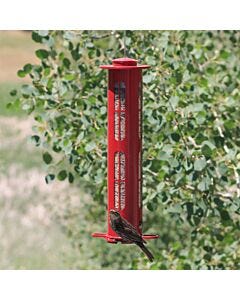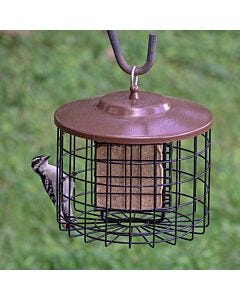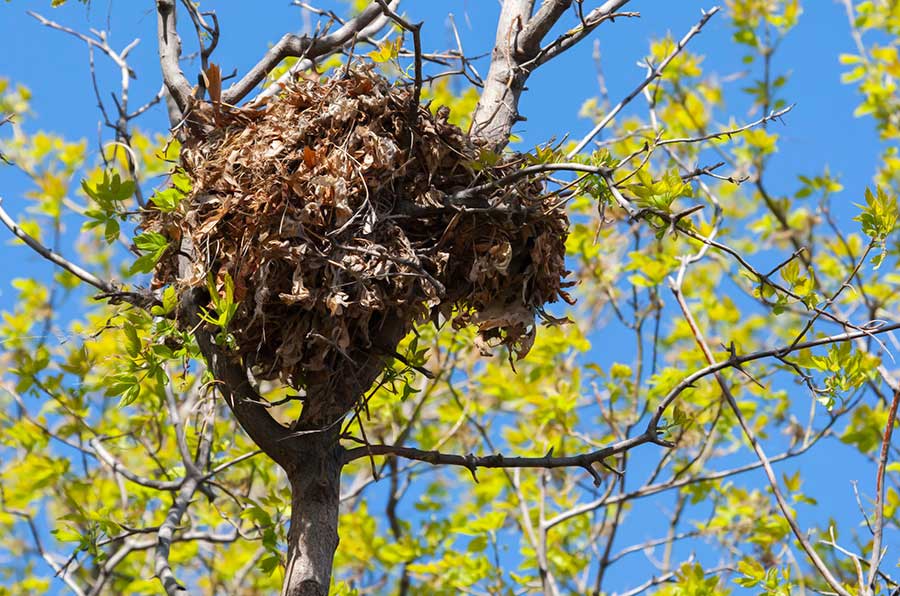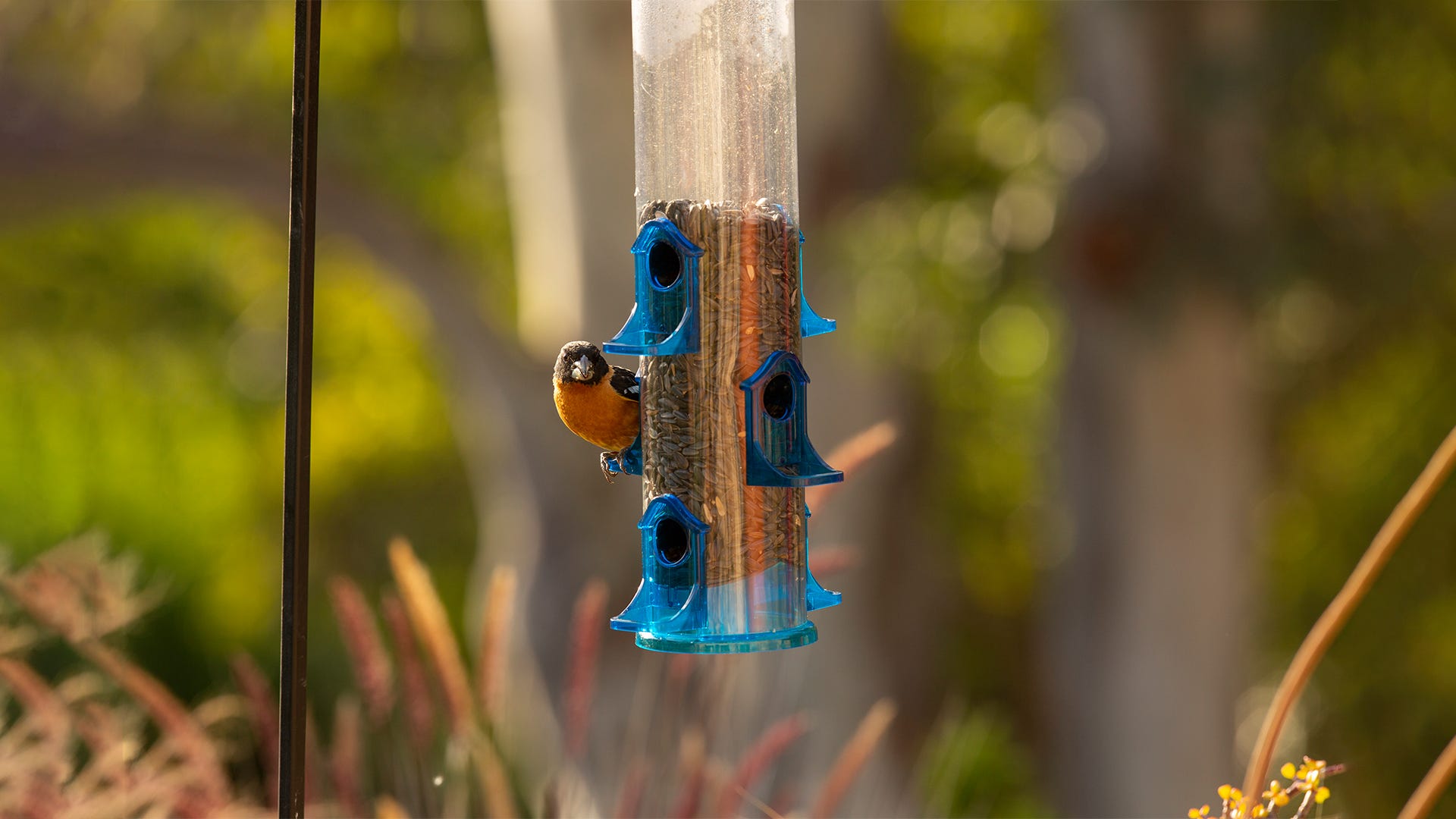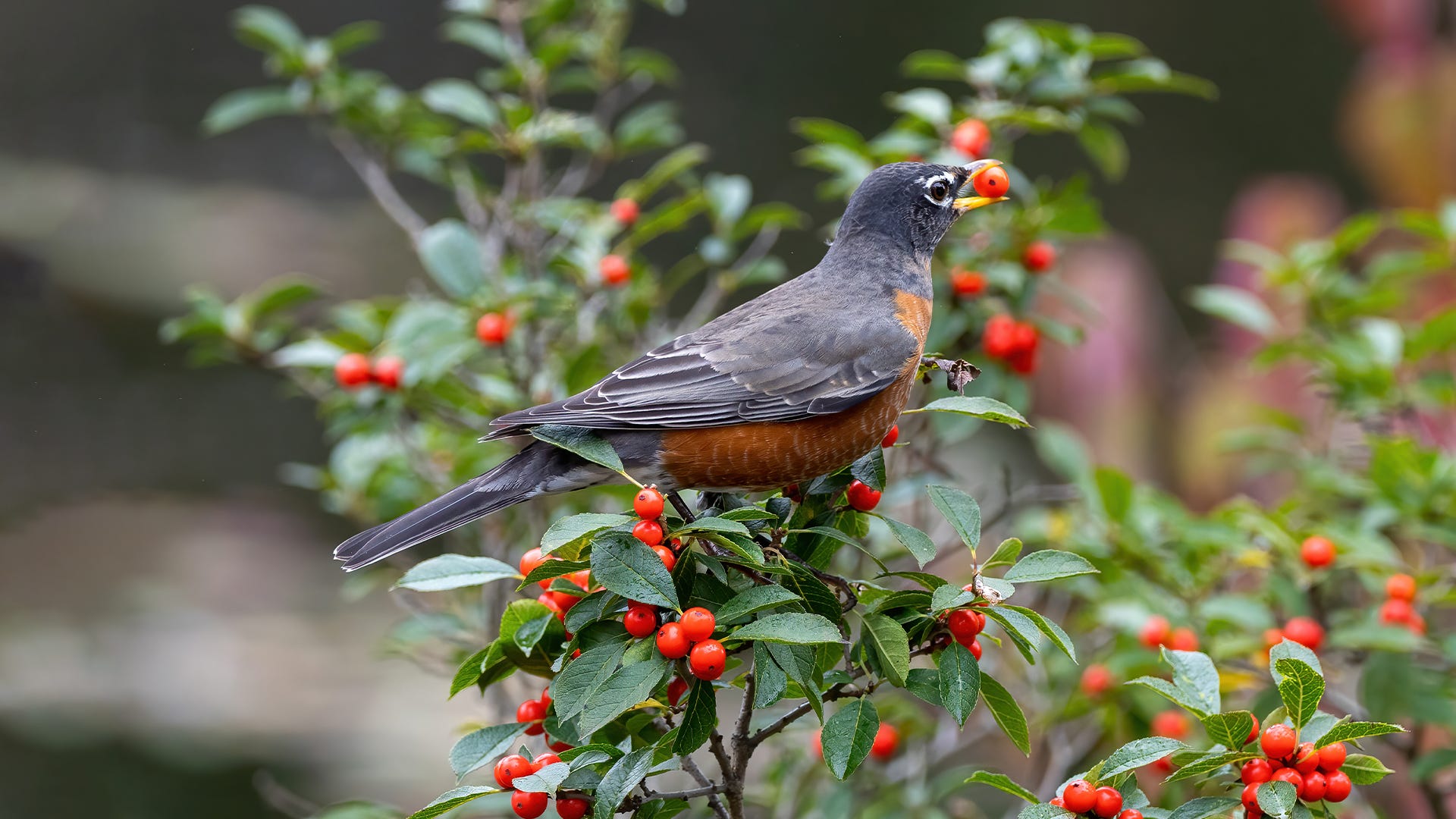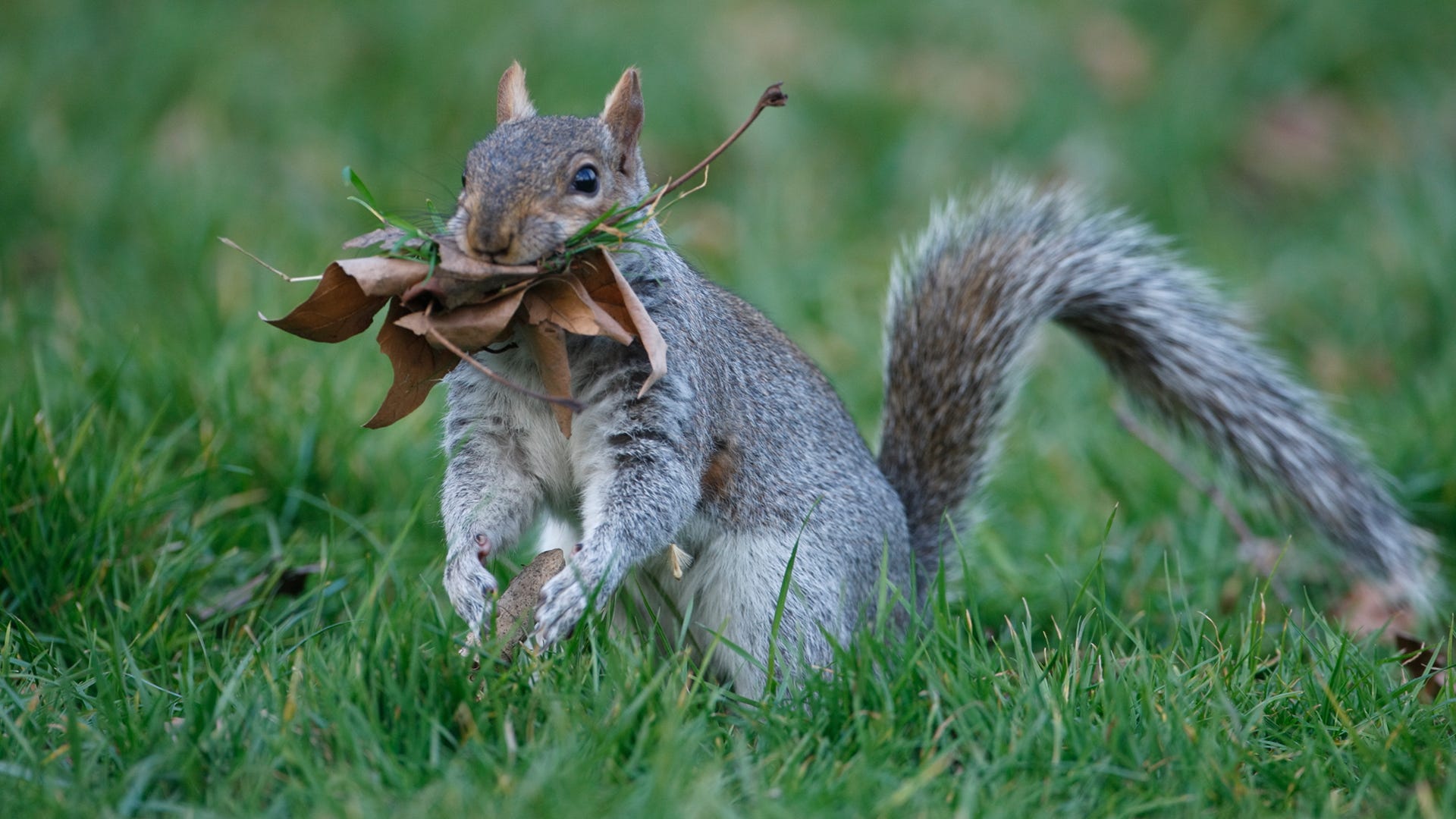
Squirrels are always entertaining guests in your yard. They bound around and look cute thanks to their fuzzy tails and adorable little button eyes. They’re amazing acrobats and climbers. They’re also highly intelligent — they can learn, solve problems and even be trained to feed straight out of our hands.
But what do we really know about squirrels? What can we learn about squirrels to help us understand them better? What other tools do we need as we try to coexist with them as people who also love to feed birds?
If you’ve observed these creatures darting up a tree, you may have asked yourself “Where do squirrels live?” and “What do squirrel nests look like?”
We are ready to help you find those answers, and with them you’ll have a greater understanding of squirrel habits.
SHOP SQUIRREL-RESISTANT FEEDERS
Types of Squirrel Nests
There are two different types of squirrel nests that can be found in the trees surrounding your backyard: Tree cavity dens or leaf nests.
- Tree Cavity Den – A tree cavity den is often first created by a woodpecker, abandoned by that bird and later claimed by a squirrel. Other tree cavity dens are created through the natural processes that can hollow out an old tree. These homes are squirrel favorites because they provide the best protection from rain, wind and snow.
- Leaf Nests – These constructions are found at least 20 feet up in a tree. Leaf nests are usually tucked in the fork of a large tree branch, which adds stability. You can tell them apart from bird nests because they are noticeably larger than a typical bird nest.
How is a Squirrel Leaf Nest Constructed?
Leaf nests are constructed from various twigs, leaves, moss and other material. To start, twigs are loosely woven together to make up the floor of the nest. Next, squirrels create more stability by packing damp leaves and moss on top of the twig platform to reinforce the structure. Then a spherical frame is woven around the base, which creates the outer shell. The final touches include stuffing in leaves, moss, twigs and sometimes even paper to build up the outer shell of the new home.
The inner cavity of its leaf nest is about six to eight inches in diameter and lined with more material, usually shredded bark, grass and leaves. However, some squirrel species, including Gray Squirrels, can have nests that are much larger. Some nest cavities can span 2 feet wide!
Squirrel Vacation Homes
Squirrels are constantly on the move, scurrying about from bird feeder to bird feeder and even from yard to yard. Because of that, it’s common for squirrels to have second and third nests located near their main home, but at varying distances. These additional squirrel nests are often used in an emergency to hide from a nearby predator, to store extra food and even as a temporary rest stop throughout a day’s activity.
A Squirrel Nest Timeline
Squirrels usually nest by themselves. However, during the height of mating time, usually at the beginning of the calendar year, male and female squirrels will double up in a nest briefly for the purpose of mating. They may also share a nest to conserve body heat during the coldest stage of winter weather.
Once spring arrives, the female squirrels turn their focus to nursing and raising their new litters. Young squirrels venture outside of the nest beginning around the six-week-old mark. After the mother squirrel teaches her brood the rules of survival, most young squirrels leave the nest for good around 10 to 12 weeks of age. Some get extended training and will stay with Mom until the second litter arrives in late summer, usually in August.
Squirrel nest-building activity is often noticeable in June and July. That’s when mother squirrels are teaching their spring-born young how to build nests. But that isn’t the busy period! Not even close!
The real squirrel nest construction boom happens during the fall. While many wild birds and animals are migrating to avoid the colder winter months, squirrels are busy collecting material and assembling strong, secure nests that can make it through a blustery winter.
Preventing Squirrels from Eating Bird Seed
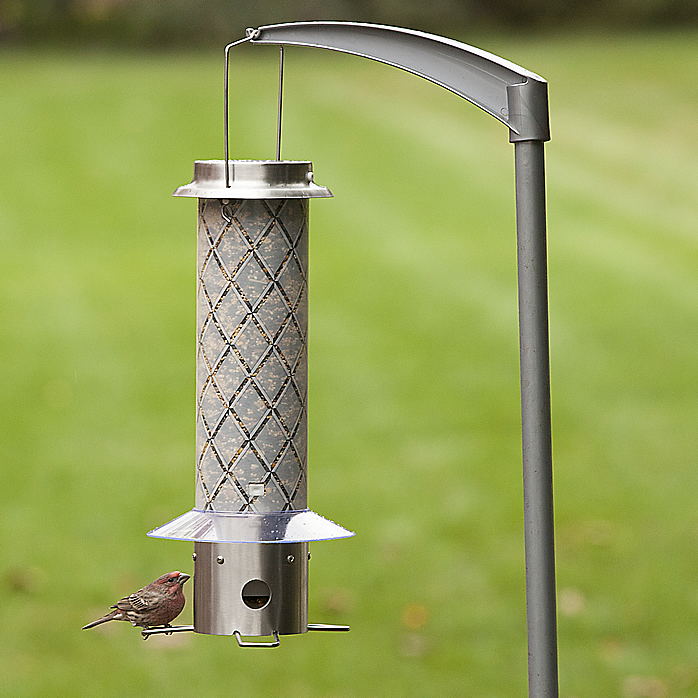
Since just about any tree in a backyard can be a paradise for a nesting squirrel, it’s not surprising that they’ll show interest in your bird feeders.
If you want to save your bird seed for birds, your best option is to limit a squirrel’s ability to get to the feeder. If they do get to the feeder, then you can also try to keep them from enjoying what they find! Some ideas:
Shop Perky-Pet® Squirrel Resistant Bird Feeders »
- Focus on placement –You need to place your bird feeders in areas that work against a squirrel’s physical prowess. Avoid branches, poles and platforms that squirrels could use to reach a feeder. Try using a squirrel baffle or pole-mounted feeder for extra squirrel-proofing measures.
- Select the best type of squirrel resistant feeder – Weight activated squirrel resistant feeders are popular among bird lovers who have large numbers of squirrels visiting their yards. Also, investing in bird feeders that have a baffle or cage will limit squirrel access to bird seed.
- Change the taste – Look for seed that birds love but squirrels hate. Try a thistle feeder or switch to safflower seeds, both of which squirrels dislike. You can also “season” your bird seed with cayenne pepper, another squirrel deterrent.
- Monitor feeder activity – Monitor the bird feeders in your backyard not only for birds, but for squirrels and other unwanted backyard pests. Learn how squirrels and other critters are accessing your feeders and try to come up with a plan to stop them.
- Understand how persistent they are – Let’s face it, squirrels have all day to think of ways to get bird seed out of your feeder. With all that time, along with their keen intelligence, they are a difficult opponent to overcome. Even when you think a squirrel has been defeated, it may surprise you later on!
Squirrel Benefits
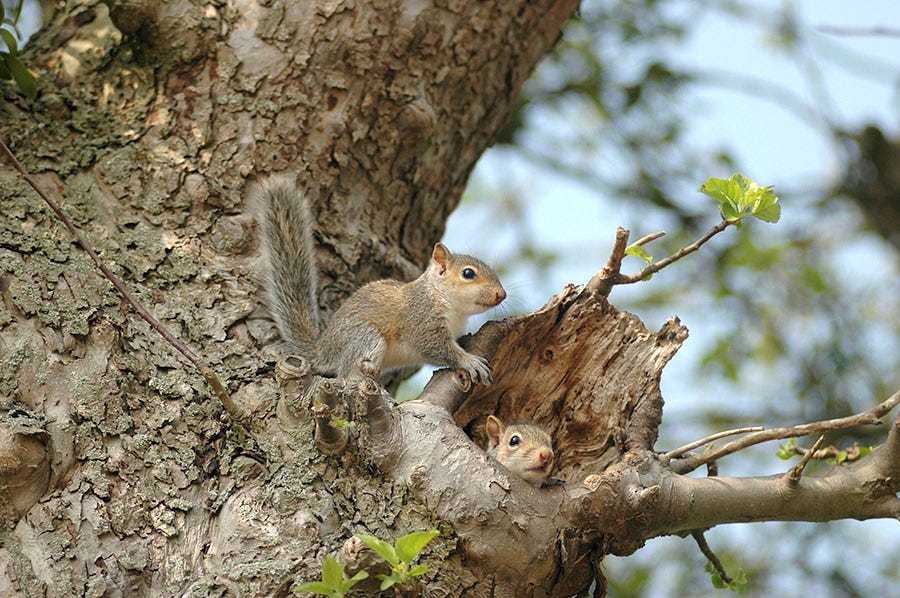 Of course it’s also good to remember that squirrels are good for the environment, too. As one of the most common creatures in towns, cities and suburbs, they provide a lot of benefits to our neighborhoods.
Of course it’s also good to remember that squirrels are good for the environment, too. As one of the most common creatures in towns, cities and suburbs, they provide a lot of benefits to our neighborhoods.
- They’re fun for us to watch. In fact, for many people a squirrel is one of the few wild animals they see on a daily basis!
- By digging for food, squirrels aerate the soil, which promotes better vegetation growth.
- The nuts and seeds that they hide and forget are either eaten by other animals. If they aren’t eaten, then many grow into new plants.
- Squirrels also eat insects, including tree-infesting beetles and grubs that damage lawns.
- Their unused nests, particularly those in tree cavities, are almost always reused by other animals.
- Squirrels are an important food source for birds of prey.
- Did we mention squirrels are really cute?
Your Squirrel Nests
Take the time to look up today. How many squirrel nests can you see around your yard? Did you ever notice them before? Now that you know what to look for, you’ll start to see them everywhere!






